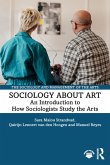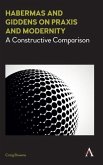'The Art and Ideology of the Trade Union Emblem, 18501925' is a ground-breaking book that considers trade union emblems and banners as art objects in their own right. It studies their commissioning, their designers and the social conditions and gender relations that they knowingly or unwittingly reveal. The volume celebrates working-class culture and shows how it could be both innovative and derivative. Annie Ravenhill-Johnson's exploration of the artistry of the emblems the art of and for the toiling masses sets these images of labour in their historical, cultural and ideological context. Her introductory chapter explores the re-signification of Greco-Roman, medieval and Renaissance architecture, figures and symbols in the emblem tradition, and analyses how these images served as representations of the developing self-awareness of the growing industrial workforces during the nineteenth and early twentieth centuries. The emblems of organized labour followed the traditions set out by Freemasonry and Friendly Societies that had adopted and adapted classical, biblical and medieval depictions of crafts and craftsmen to illustrate the antiquity of their trade and to lend solemnity and legitimacy to the tradition of forming associations for protection and benefits. Renaissance art, architecture and sculpture, the conventions of landscape painting and the more prestigious genres of mythical and biblical subjects all provided settings and structures that sanitized working conditions and idealized the workers themselves.
Dieser Download kann aus rechtlichen Gründen nur mit Rechnungsadresse in A, D ausgeliefert werden.









